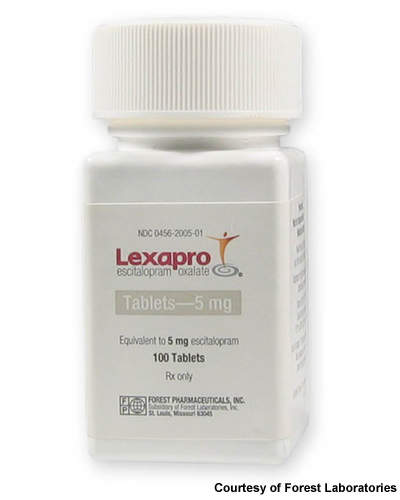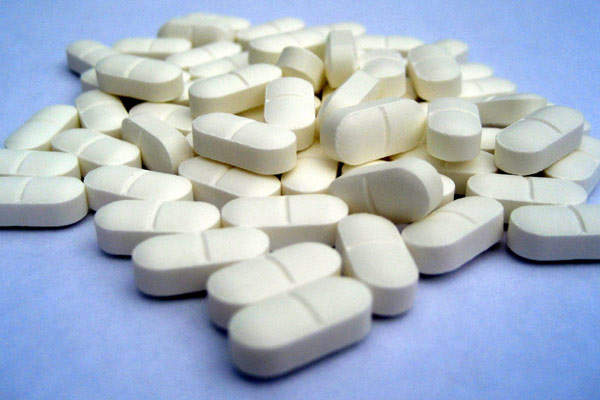In March 2009, the US Food and Drug Administration (FDA) approved the supplemental new drug application (sNDA) of Forest Laboratories for Lexapro (escitalopram oxalate) indicated for the acute and maintenance treatment of major depressive disorder (MDD) in adolescents between 12 and 17 years of age. Lexapro is now only the second antidepressant that is approved for the treatment of MDD in adolescents. MDD affects around two million adolescents in the US.
As well as being prescribed for the acute and maintenance treatment of MDD in adults and adolescents, Lexapro is also used for acute treatment of generalised anxiety disorder (GAD) in adults.
Lexapro has been commercially available in the US since its original launch in 2002, and has been prescribed to more than 18 million US adults for depression, anxiety or both. Forest licensed Lexapro from the Danish pharmaceutical company, Lundbeck when the drug was in the clinical stage. Lexapro is Forest Laboratories’s biggest revenue-maker with total sales of $2.8bn in 2008. The drug is available in 5mg, 10mg and 20mg tablets and also as an oral solution (1mg/ml). Lexapro is also marketed as Cipralex, Seroplex and Seroplexa.
FDA approval for adolescents (12-17 years)
The approval of Lexapro by the FDA for the treatment of adolescent depression was based on two placebo-controlled studies. One was conducted in adolescent patients taking Lexapro and the other in children and adolescents taking citalopram. Lexapro showed statistically significant greater mean improvement from baseline, compared to placebo, on the children’s depression rating scale-revised (CDRS-R) in an eight-week flexible-dose, placebo-controlled study that compared Lexapro 10mg-20mg a day to placebo in 12 to 17-year-old patients reported in 2008.
Children and adolescents aged seven to 17 years old treated with racemic citalopram 20mg-40mg a day showed statistically significant greater mean improvement from baseline on the CDRS-R compared to patients treated with placebo, in another eight-week, flexible-dose, placebo-controlled study. The majority of the positive results for this trial were from the adolescent subgroup. Partly on the basis of the results from this study, the FDA’s determination of the effectiveness of Lexapro in the acute treatment of MDD in adolescents was established.
A Lexapro study in patients aged seven to 17 and a citalopram study in adolescents were also conducted as additional flexible-dose, placebo-controlled MDD studies. None of these demonstrated efficacies on the primary efficacy parameter.
Lexapro was quite well tolerated and adverse reactions in paediatric patients were mostly similar to those seen in adult studies. The clinical trials that support the use of Lexapro in adolescents were conducted in the US except for one, which was conducted in Europe. The subjects for the trials were outpatients 12-17 years old inclusive who met DSM-IV criteria for MDD and outpatients aged seven to 17 years who met DSM-IV criteria for MDD.
How Lexapro works
Lexapro was created based on an advanced technique – by isolating the medicinal component of Celexa (citalopram HBr), a molecule known as an isomer.
Lexapro belongs to the family of drugs known as selective serotonin (a neurotransmitter that is believed to influence mood), reuptake inhibitors or SSRIs. Lexapro helps restore the chemical balance of the brain by increasing the available supply of serotonin, with minimal effect on many of the other chemicals in the brain.
Adolescent depression is characterised by persistent sadness or irritability or loss of interest in usual activities. Talk therapy and medication play an important role in managing adolescents who suffer from depression. Healthcare providers, family members, and other caregivers should closely monitor those on antidepressant treatment.
SSRIs
According to research studies, people suffering from depression and anxiety have an imbalance of the brain’s neurotransmitters. These are chemicals in the brain that help nerve cells to communicate. One of these neurotransmitters is serotonin, and an imbalance in serotonin may cause depression and anxiety.
Serotonin is released from one nerve cell and reaches the next. During the process, the first nerve cell reabsorbs some of the serotonin released. Here, SSRIs block the reabsorption of serotonin into the first nerve cell.
This blocking action increases the amount of serotonin available at the next nerve cell. In this way SSRIs affect the balance of serotonin in the brain.
Forest Laboratories
Forest Laboratories, headquartered in New York, has franchises in the central nervous and cardiovascular systems therapeutic areas. Forest’s product pipeline also includes candidates in different stages of development in various therapeutic areas.
Forest also manufactures Celexa (citalopram), an SSRI that is indicated for the treatment of MDD in adults and has another compound (F2695) in its pipeline to treat depression.










